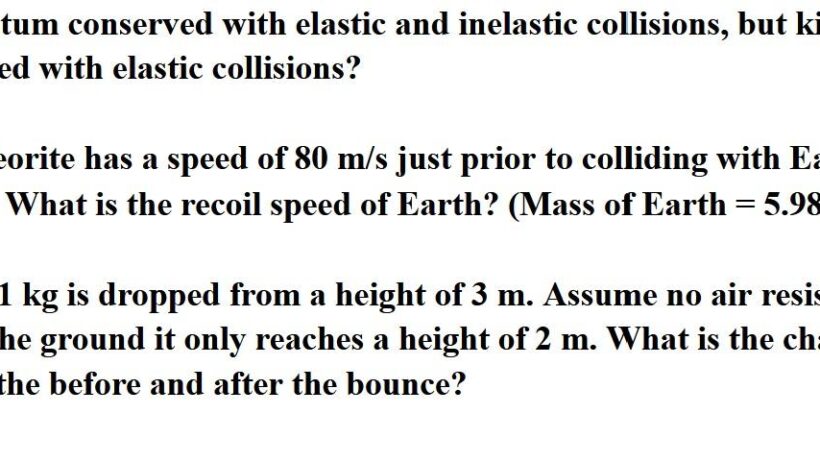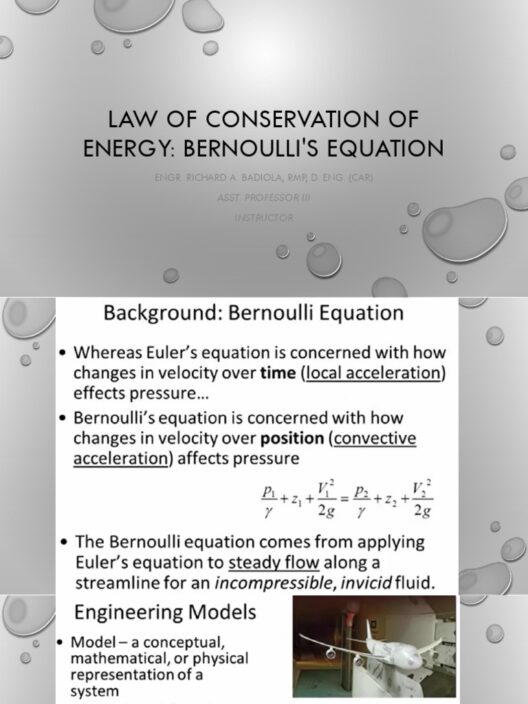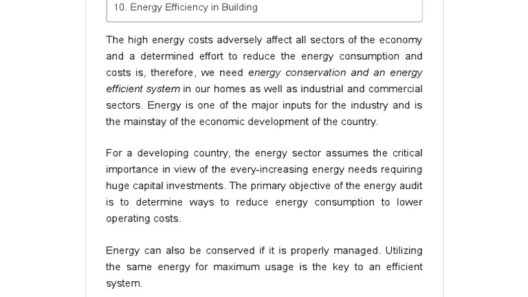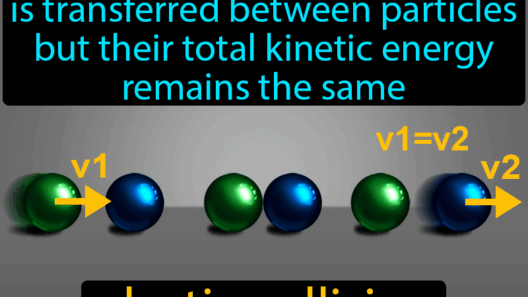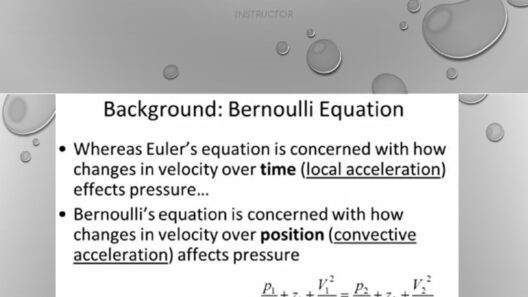Within the realm of physics, the concepts of elastic and inelastic collisions intrigue scholars and enthusiasts alike, as they serve as pivotal phenomena illustrating the conservation of energy. Specifically, a fundamental query arises: is kinetic energy more conserved in elastic or inelastic collisions? To unravel this question, one must first comprehend the characteristics of these two types of collisions, their implications on kinetic energy, and the broader consequences for systems engaged in these interactions.
At the crux of this discussion lies the definition of elastic and inelastic collisions. An elastic collision is a type of collision where both momentum and kinetic energy are conserved. In contrast, inelastic collisions conserve momentum but not kinetic energy. This distinction forms the basis for understanding how energy transforms during interactions between bodies, leading us to explore the nature of energy conservation in these contexts.
In an elastic collision, two objects collide and rebound off each other without a permanent deformation or generation of heat. Classic examples involve gas particles or billiard balls colliding. During such interactions, the collective kinetic energy of the system remains constant before and after the collision. Imagine two billiard balls moving toward each other; they collide and move away with altered velocities, yet the sum of their kinetic energies before the collision equals that after the impact. This fascinating property showcases the idealized conditions under which energy conservation is achievable, illustrating a harmonious interplay of forces at work.
On the other hand, we encounter inelastic collisions, where the narrative diverges significantly. These collisions occur when two bodies collide and do not separate, or when they undergo a change in shape. A quintessential manifestation of inelastic collisions can be seen in car crashes, where vehicles crumple and kinetic energy dissipates in various forms, primarily heat and sound. In this scenario, while the total momentum of the system is conserved, the kinetic energy is not. The kinetic energy diminishes due to the energy transformed into other forms, exemplifying a fundamental principle of energy transfer and transformation.
To elucidate the quantitative differences between these two forms of collisions, consider a mathematical approach. Let us examine two objects with masses m1 and m2, initially moving with velocities u1 and u2 respectively. In the case of an elastic collision, applying the conservation laws provides us with equations that allow us to solve for the final velocities v1 and v2:
1. m1 * u1 + m2 * u2 = m1 * v1 + m2 * v2 (Momentum conservation)
2. 1/2 m1 * u1^2 + 1/2 m2 * u2^2 = 1/2 m1 * v1^2 + 1/2 m2 * v2^2 (Energy conservation)
Conversely, in an inelastic collision, while the first momentum equation remains valid, the second equation showcasing kinetic energy reads:
m1 * u1 + m2 * u2 = (m1 + m2) * v (where v is the combined final velocity after collision)
Here, one observes that the kinetic energy before the collision will not equal the kinetic energy post-collision. The disparity illustrates the energy that has transformed into other forms, an integral aspect of understanding energy dynamics.
One may ponder the relevance of these findings beyond theoretical frameworks. Elastic collisions, characterized by their energy-conserving nature, play crucial roles in various fields such as particle physics and engineering. Understanding these collisions aids in designing systems that require precise energy conservation, like in high-energy particle collisions or systems utilizing pneumatic energy. On the contrary, the insights gained from inelastic collisions have profound implications in safety engineering, particularly in automotive design. By grasping how kinetic energy is absorbed and transformed during inelastic collisions, safety features like crumple zones can be designed to protect occupants effectively. This profound knowledge not only enhances human safety but encourages the incorporation of sustainable practices in design.
As one delves deeper, the interplay of kinetic energy conservation in these collisions raises compelling questions about energy optimization and the fate of energy in our environment. The elegance of physics illustrates that inelastic collisions, despite their lack of energy conservation, serve as a reminder of the inevitable transformation and dissipation that energy undergoes in real-world applications. This encourages contemplation on how energy is utilized and conserved across various domains, from vehicular travel to innovative architectural designs aimed at reducing energy wastage.
Furthermore, the understanding of both collision types informs discussions on broader scientific and environmental issues. The contrast between conservation and dissipation mirrors the dichotomy between sustainable practices and environmental degradation. Just as kinetic energy dissipates in inelastic collisions, so too does our tendency to squander energy resources without mindful management. Acknowledging the lessons from these collisions prompts a reevaluation of practices aimed at conserving energy and implementing more sustainable solutions in our everyday lives.
In conclusion, the query of whether kinetic energy is more conserved in elastic or inelastic collisions extends beyond mere physics; it is a reflection on energy, sustainability, and the necessity of mindful resource utilization. As we engage with these principles, we are implored to shift our perspectives on energy conservation. Embracing the insights derived from both the idealistic nature of elastic collisions and the practical implications of inelastic collisions may well lead to a more sustainable future, where energy is respected, conserved, and utilized wisely across numerous domains of society.



